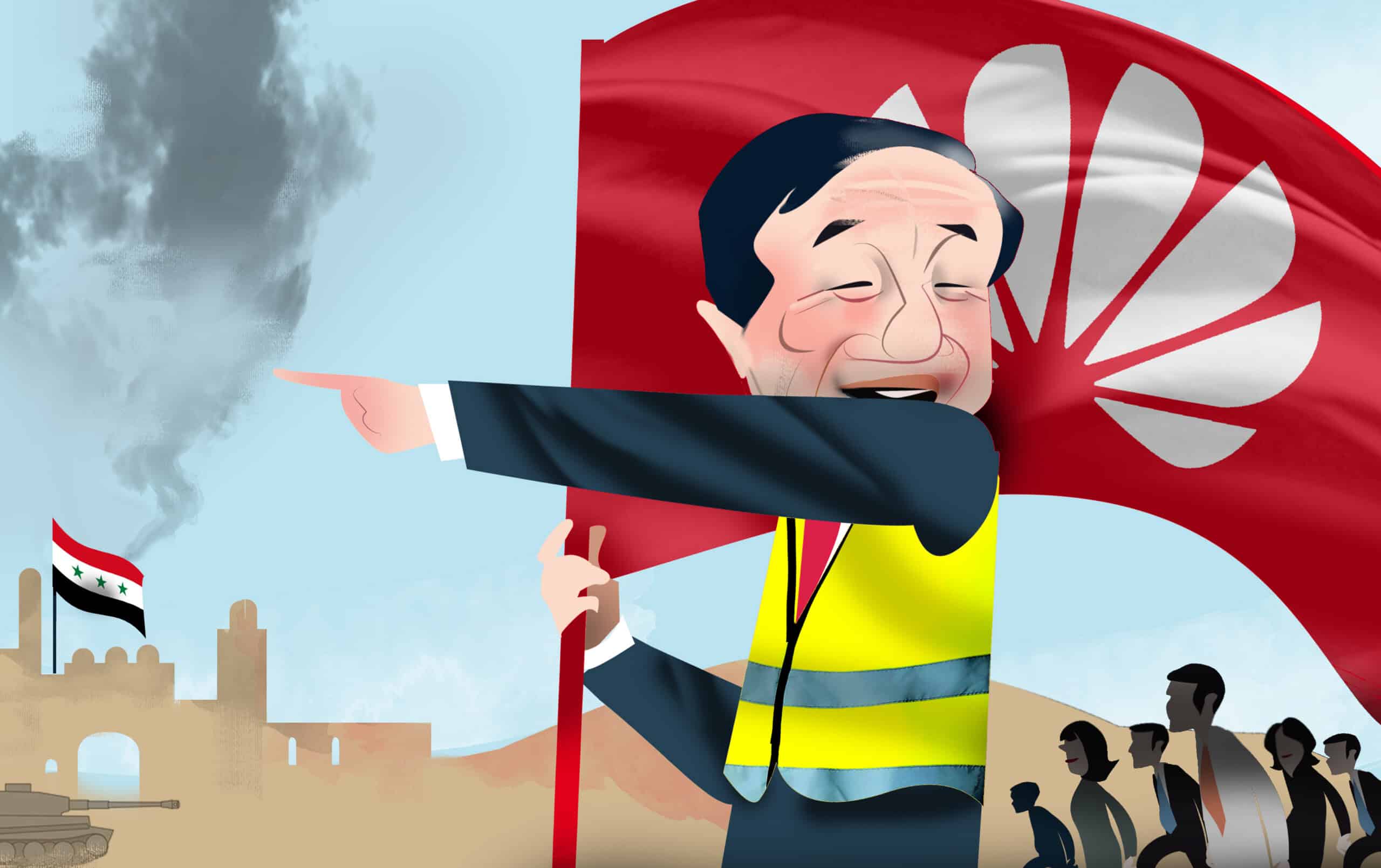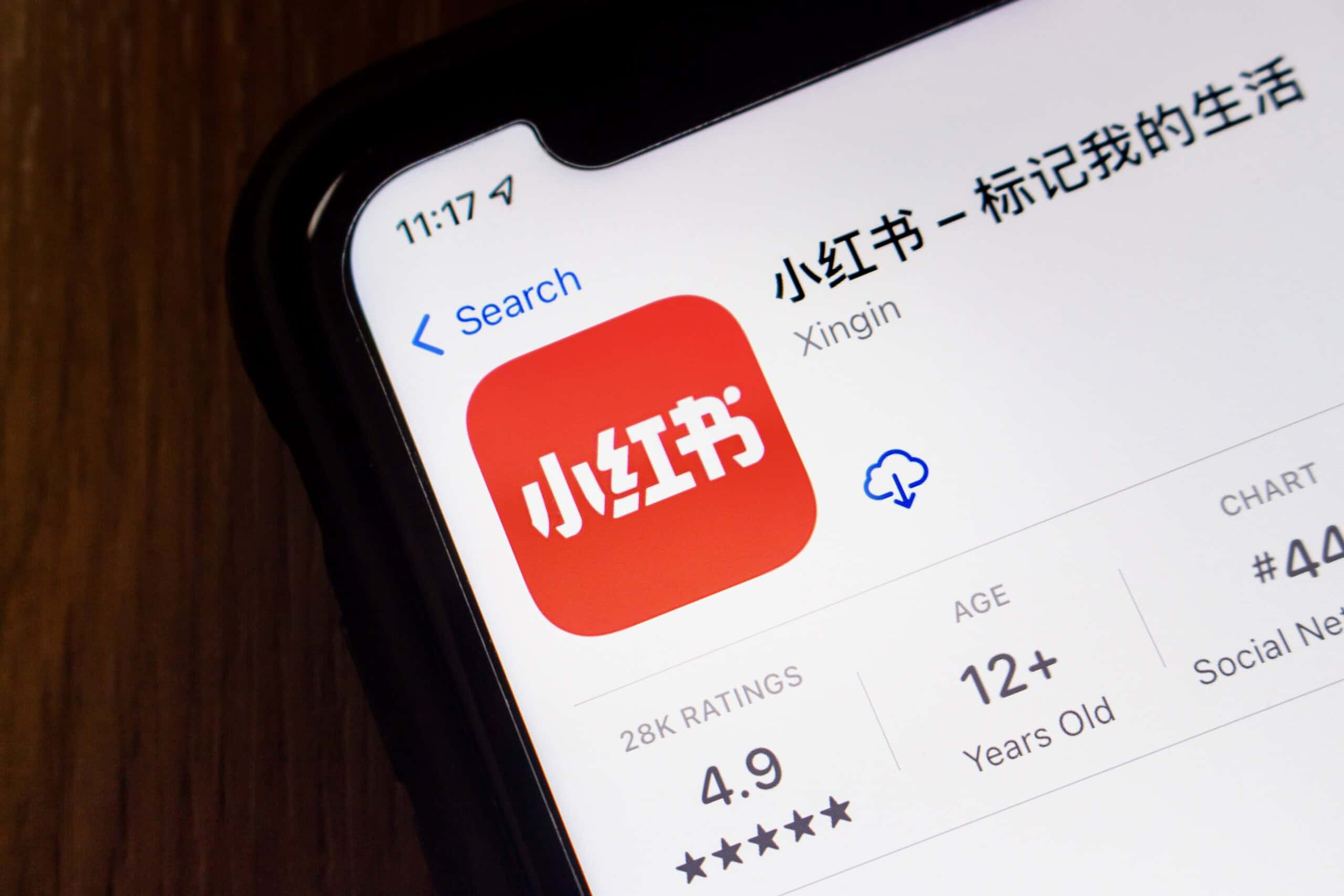Fiona Cunningham, an assistant professor at the University of Pennsylvania, argues that China has found a novel way to coerce its adversaries in future wars, even with fewer nuclear weapons and a weaker military than the United States. In a book published this week, Under the Nuclear Shadow: China’s Information-Age Weapons in International Security, she explains how China has given a “starring role” to a new class of armaments. In this conversation, which has been condensed and edited, we discussed why China developed these “information-age” weapons and where this pursuit fits into the country’s overall military strategy.

Illustration by Lauren Crow
Q: You have developed a theory to explain why China’s military strategy looks different from that of many other nuclear-armed countries. What is “strategic substitution” and what sets China apart in pursuing it?
A: Strategic substitution is an approach to dealing with the big problem that all nuclear-armed countries face, which is that they want to avoid a catastrophic nuclear war, but still want to use their military capabilities to coerce their adversaries. Within that broad framework, other countries have taken familiar approaches. Russia has a very threatening nuclear posture, and the United States has very capable conventional military forces.
Strategic substitution is the third way of managing this problem. It pairs together two things: approaches to using certain non-nuclear weapons that are very escalatory, and a nuclear strategy that is quite restrained. When you put those two things together, you put costs and risks on your adversary’s horizon, but then you say, “I’m not going to use my nuclear weapons.” You’re daring your adversary to use nuclear weapons in response to this strategy, and calling their bluff if they’re not willing to go nuclear for whatever is at stake.
| BIO AT A GLANCE | |
|---|---|
| AGE | 38 |
| BIRTHPLACE | Sydney, Australia |
| CURRENT POSITION | Assistant Professor of Political Science at the University of Pennsylvania |
China’s preferred approach is to use information-age weapons, which is my shorthand term for offensive cyber capabilities, counterspace capabilities, and precision conventional missiles — the non-nuclear weapons it uses to threaten escalation.
Why did you decide to write about this now?
We are in a moment where emerging technologies are disrupting ideas of strategic nuclear stability, and have unknown consequences for what future wars will look like. What they mean for China is not the same as what they mean for the United States, or what they might mean for Russia, or France, the UK, or Japan.
| MISCELLANEA | |
|---|---|
| FAVORITE BOOK | Midnight’s Children by Salman Rushdie, Arms and Influence by Thomas Schelling |
| FAVORITE FILM | Amelie |
| FAVORITE MUSIC | Chapelier Fou, Emancipator and March |
| MOST ADMIRED | My family |
We’re also observing a historic buildup of China’s nuclear capabilities. My strategic substitution helps us to better understand how China might plan to use force against the United States. China has relied on information-age weapons to generate escalatory pressure, not nuclear weapons, for a long time. My approach puts China’s recent nuclear modernization in context and gives us pause when we consider whether China is planning to move towards a more threatening nuclear posture. I argue that there’s not a lot of evidence to suggest that.
The final reason is that it’s tremendously enjoyable to do fine-grained and deep research about China. I had the privilege of being able to spend more than a year doing fieldwork in China. At a time when everyone is grappling to understand what China is doing, it shows that you can still learn a lot about China by doing this kind of research, even as information has become more difficult to access.
Fiona Cunningham discusses her fieldwork in China during a talk at Georgetown University, October 30, 2024. Credit: Georgetown University
We need to understand how China might do things differently, rather than imposing frameworks on its behavior that are drawn from other time periods and other countries.
So how would China choose to use these information age weapons versus some other form of attack?
The way that China plans to use information-age weapons is for coercive leverage. This is the ability to threaten to impose pain, risk, damage, or hurt on your adversary as a way of trying to get them to do what you want.

So what does that look like in practice? It means that you need to configure them in what I call “coercive force postures.” It sounds complex, but really that just means you need to bundle together a set of capabilities with a doctrine: plans of when you’re going to use them, how much force you’re going to use at any given time, what targets you’re going to hit, how you’re going to organize them, and who in the PLA or outside of the PLA in the Chinese Communist Party is going to have authority to say you can use these weapons. And then also, what are you going to signal to your adversaries about all of these plans? Because you do need to signal something to your adversaries to be able to reap the benefits of threats to use them.
China now postures all three of these capabilities in ways that are meant to try and control the application of force. That means that it keeps very tight command and control over the use of these weapons from the top leadership in China’s military. Among other things, that is one of the key features for how it tries to manage and calibrate escalation, until you get to the most intense use of these capabilities that starts to get you into that fuzzy zone between conventional war and nuclear war.

So is the goal to create the conditions for escalation that could conceivably end in nuclear war?
One thing these weapons can do is threaten large-scale effects on a society, on its military, or on its allies. So here you might think of causing disruptions to critical infrastructure, exactly the kind of thing that U.S. officials believe China is trying to do with its Volt Typhoon cyber intrusions.
The second thing that they can do is cross tacit thresholds, or agreed upon limits that countries put in place when they fight wars. So for example, if you take the use of force into outer space when a war has never been waged in space — if I’m willing to violate that threshold, maybe I’m also willing to violate the threshold between conventional and nuclear war.
The final and perhaps the most important way that these capabilities threaten escalation is that they share technology with nuclear weapons. You need information networks to operate nuclear weapons. You need space-based support, sometimes for warning of an adversary’s missile attack, and often for other functions like communications. And missiles can carry nuclear warheads or conventional warheads. So by possessing information-age weapons, by threatening to use them, you generate both the risk of inadvertent nuclear escalation and deliberate nuclear escalation.

All three of these different pathways push a conventional conflict closer and closer to the threshold of nuclear war and squeeze an adversary right up to that line where they have to make a decision: Am I going to respond to these really provocative information-age weapons attacks with nuclear weapons, or am I just going to accept these provocative attacks?
Some people might look at this and think this is the most brilliant way to walk the line between conventional and nuclear conflicts, so that you can do the best job of coercing your adversary. But it also just might not work. So it is risky both in the sense of generating risks in a conflict, and also in the sense that you’re trying to guess that you’ve picked the right amount of risk and damage that your adversary is willing to tolerate.
…China believes that it is more resolved than the United States about the fate of Taiwan. The question that is more nebulous for China is how much the outcome of that particular conflict matters for the U.S.’s broader reputation.
China cares a lot more about one primary conflict scenario over which you would see strategic substitution employed, which is a Taiwan contingency in which the U.S. would intervene. And China believes that it is more resolved than the United States about the fate of Taiwan. The question that is more nebulous for China is how much the outcome of that particular conflict matters for the U.S.’s broader reputation. That is probably the area where it might underestimate U.S. resolve, and these resolve calculations are also going to change once the two countries find themselves in a war.
You write that two incidents led China to develop information-age weapons as strategic substitutes: the 1995-96 Taiwan Strait crisis and the 1999 U.S. bombing of the Chinese embassy in Belgrade, which Washington said was an accident. Let’s start with the Taiwan Strait crisis. What made this moment pivotal in China’s development of strategic substitution?

It confirmed for China that the most important scenario it was going to face in any future war was going to involve the intervention of a nuclear-armed superpower. Prior to that point, China was thinking about conflicts on its periphery. But it’s not clear that there was as much of a focus on Taiwan. The signal of U.S. support for Taiwan changed China’s calculations about how it needed to plan for a future Taiwan contingency.
And that lays the foundations for China to develop the precision conventional missiles that you describe as an information-age weapon.
China’s Air Force demonstrates its air defense and anti-missile capabilities, August 29, 2016. Credit: CCTV
Precisely. If you follow China’s progression, you see feasibility studies for its anti-ship ballistic missiles start to appear in 1997. The kind of technologies that you need to hit moving targets also start to be developed in 1997. A big expansion in the size of China’s short range ballistic missile force along the coastline facing Taiwan happened around 1998 or 1999. And then in 2003, China established a unit to test its first medium-range ballistic missile. So you start to see these improvements in range and accuracy that eventually lead to the advanced, accurate and large conventional missile force that China is fielding today.
Every time China faced one of these crises, it revealed new information about China’s existing military capabilities, and that China was inadequately prepared if it actually had to fight a war against the United States, which I call a leverage deficit. If it did nothing in response to those crises, if a war broke out in the future, then China was either going to have to make humiliating diplomatic concessions, or was going to have to fight a war that it was going to lose.

The Belgrade bombing came amid a NATO intervention in the Balkans, which was not approved by the UN Security Council. Why should we think of this as a second major event in China’s development of strategic substitution?
The Belgrade embassy bombing deepened China’s leverage deficit. Right after that, Jiang Zemin, who was then China’s top leader, called a meeting of the Politburo Standing Committee, and said, “I’m shocked and indignant. This event is not a trivial matter, it is absolutely critical.” And “the Chinese people cannot be bullied.” He made it clear that this had revealed something about the U.S. capacity to create problems for China and China’s inability to effectively respond to them. He then ordered the PLA to come up with ways to strengthen China’s defense capabilities, to make sure that the Chinese people never get bullied again.
So the PLA then ran a series of meetings. Where were the quick fixes or shortcuts that were going to help them address this leverage deficit? The two that they identified are offensive cyber capabilities and counter space weapons.
The context of this humanitarian intervention in Europe without the approval of the UN Security Council also matters for how strong China’s reaction was to this bombing. They were thinking, if the U.S. can intervene in these far flung places in Europe, what’s to say that it couldn’t intervene in some of China’s sensitive disputes as well?
Many countries have information-age weapons. But you argue that China uses them specifically for strategic substitution, and other countries do not give them that role.
Take the United States. Yes, the U.S. has offensive cyber capabilities. Yes, it has very well-developed precision strike capability, and counterspace technologies. But it uses them primarily to enhance parts of its nuclear strategy and conventional warfighting. In Russia, you see more of a coercive leverage role for some of these capabilities. But the starring role in its strategic deterrent forces is played by its nuclear weapons. For China, the starring role is given to information-age weapons, and nuclear weapons play a supporting role.

Could the United States deploy information-age weapons as effectively as China does?
The United States has a lot of really good options when it comes to its military capabilities. It has a superb conventional military force and an incredibly advanced nuclear weapons capability, far more advanced than China’s. The U.S. has less of a need to use these information-age weapons for coercive leverage.
It’s not to say that the U.S. couldn’t do that if it wanted to replicate this approach, and it might be one way to bolster U.S. strategic deterrence without needing to grow the size of the nuclear arsenal. But U.S. decision makers might also learn from China’s experience as to whether this was a successful experiment, a stopgap or a failure.
Do you expect China’s improved conventional and nuclear capabilities to alter the place it gives information-age weapons in its overall military strategy?

China’s thinking about its strategic deterrence capabilities is driven by leverage deficits. You would need to see one of those occur to shake things up so that China’s leaders would be reassessing which basket they put their eggs in going forward.
One way of thinking about this is that Chinese capabilities are better across the board in all of these areas: its conventional military, its nuclear weapons, and its information-age capabilities for strategic substitution. And so if there’s a future crisis, perhaps China isn’t going to feel like it’s doing too badly in terms of threatening cost and risk against the U.S. for intervening in a future cross-strait crisis, and so it might not need to re-think its existing approach.
But China now has to look at its investment in information-age weapons and say is this going to give us the amount of leverage that we think it is? Is it going to backfire on us in some ways?
You interviewed lots of experts in China, including people from PLA-affiliated institutions. How did those interviews inform your analysis?
To support my claims about strategic substitution I relied most heavily on documents — memoirs, chronologies, PLA teaching materials, and leadership speeches, among others. For example, Jiang Zemin said in 2002 in a speech to an enlarged meeting of the Central Military Commission that China was going to now rely on multiple means of strategic deterrence. China doesn’t officially recognize that it has offensive cyber capabilities or counter space capabilities, which can make China’s specific choices a sensitive topic.
China has been pre-positioning malware in U.S. critical infrastructure networks in ways that U.S. officials believe is intended to shape U.S. decision makers’ willingness to become involved in contingencies with China in the Indo-Pacific.
But I did have a lot of conversations about the strengths and weaknesses of information-age weapons compared to nuclear and conventional capabilities with Chinese experts. When I mentioned the idea that China uses information-age weapons to substitute or compensate for both its conventional weakness and nuclear strategy, that approach resonated with those experts.

I want to return to the way that states can defend against information-age weapons. What are some of those ways? And are the United States and other countries doing enough or investing enough in it?
One of the features of these capabilities is that they’re difficult to defend against, but they’re not impossible to defend against. You can blunt the effects by taking a couple of steps. One of the obvious ones for precision conventional missiles is that you field missile defenses. This is something that the United States has been doing in the Indo-Pacific region, to try and protect some important bases.
One of the other important measures is resilience. You come up with ways to be able to not operate from the base that’s going to have lots of missiles raining down on its runways. One of the other approaches the U.S. has taken is to disperse its forces as a way of trying to create dilemmas for China in thinking about using its precision conventional missiles.


Left: China’s Dongfeng 21, a two-stage, solid-fuel, single-warhead medium-range ballistic missile. Right: China’s Dongfeng 26, an intermediate-range ballistic missile. Credit: Longshi Aviation Photography, CGTN
But the other solution to this is to try and attack China’s missiles preemptively or otherwise stop them from being launched. That is a problem that the United States has dedicated a lot of attention to. One of the issues that U.S. scholars have pointed out is that some of these missiles are carrying nuclear and conventional warheads. What do you do when you are striking a target and you don’t know if it’s nuclear or conventional? The calculation is very different between those two targets.
Countering information-age attacks is a particularly difficult problem on the cyber front, such as concerning the Volt Typhoon intrusions. China has been pre-positioning malware in U.S. critical infrastructure networks in ways that U.S. officials believe is intended to shape U.S. decision makers’ willingness to become involved in contingencies with China in the Indo-Pacific.
And with regards to space, even Chinese analysts recognize the U.S. has made a lot of progress in recent years in space defense. One of the big evolutions technologically is that the U.S. is trying to move as many of its satellite constellations as it can to a mixed model, where it has some very exquisite, expensive, high-value satellites, but it also has backups of some of the same functions on satellites that are smaller and cheaper.
There’s always more that any given country can do, including the United States, to shore up these pieces, but the combination of defense and resilience is perhaps one of the most important steps the U.S. can take.

Noah Berman is a staff writer for The Wire based in New York. He previously wrote about economics and technology at the Council on Foreign Relations. His work has appeared in the Boston Globe and PBS News. He graduated from Georgetown University.




